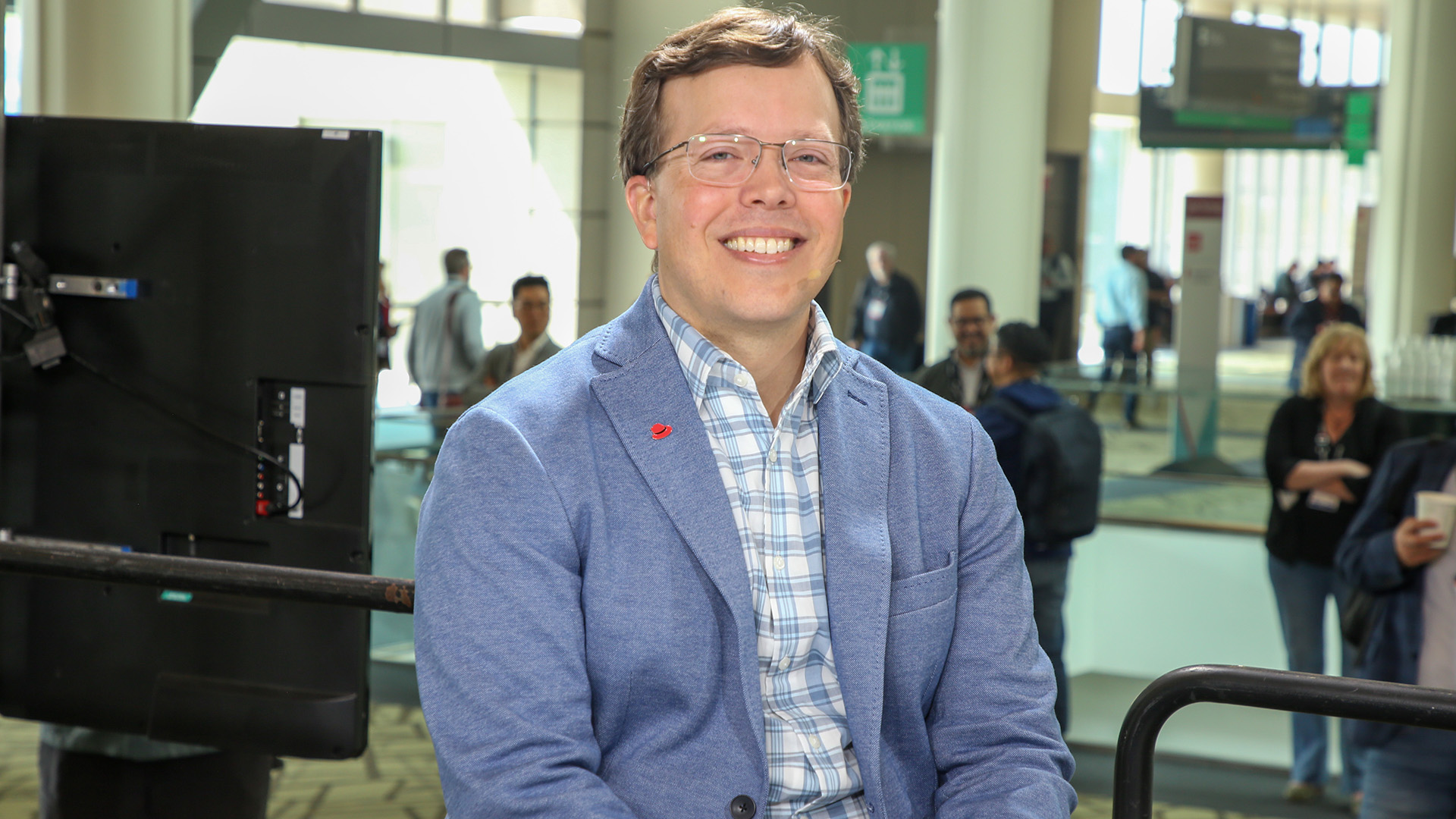 AI
AI
 AI
AI
 AI
AI
The world of technology has witnessed several inflection points that have shaped the way the enterprise develops and operates systems. Artificial Intelligence is just the latest inflection point having a significant impact on developers and the open-source ecosystem.
During this week’s Red Hat Summit, Matt Hicks (pictured), president and chief executive officer of Red Hat Inc., discussed these inflection points and their influence on the industry. With a career marked by four key moments: open source, the internet, distributed teams and the iPhone, Hicks believes that each of these moments has contributed to the evolution of technology and has set the stage for the current era we find ourselves in.
“When you look at the challenges that IT has, and we’ve been seeing also security’s a big part of that, how do the operations keep up with the speed of developers?” Hicks said. “Shift left, the security, the developers are handling that right in the pipeline. You have security threats. Now you have AI, which is now a data opportunity challenge as well.”
Hicks spoke with theCUBE industry analysts John Furrier and Rob Strechay at Red Hat Summit, during an exclusive broadcast on theCUBE, SiliconANGLE Media’s livestreaming studio. They discussed how Hicks sees AI as a fast-growing field that has the potential to become the innovation model for the future. (* Disclosure below.)
One of the challenges in the information technology landscape is the need for operations to keep up with the speed of developers. With the emergence of AI, the complexity of managing security threats and data opportunities has increased. Hicks emphasized the importance of collaboration between development and operations teams to effectively address these challenges. Just as the industry has embraced concepts such as “shift left” in security, he believes that AI can be leveraged to enhance domain expertise and improve development and operations practices.
The concept of raising the floor, which refers to the accelerated learning and specialization made possible by AI, was also a topic of discussion. Hicks compared it to the impact of Google’s search engine, which made information more accessible to developers. With AI, individuals can acquire specialized skills and learn from their peers at a faster pace, leading to increased productivity and efficiency.
“I parallel this back to … when I started, you had to read books — or in my case, read open-source code to learn,” Hicks explained. “But when Google came around, its search was so ubiquitous, developers didn’t have to do that same model. They could get a lot of suggestions. AI’s doing the same thing. You can come out of college, have some core skills, and get really, really good in specialization fast and then learn from the people around you at a quicker pace.”
While large language models have a significant role to play in app development and experimentation, infrastructure automation requires more deterministic outcomes, according to Hicks. As AI models become more specialized for specific domains, their application in infrastructure automation will need to be tightly controlled and secure.
Regarding the risks associated with AI, it’s critical to find the right balance between innovation and compliance, Hicks pointed out. Open-source principles serve as a foundation for Red Hat’s approach, ensuring that copyright choices and open-source licenses are respected. Transparency, attribution and understanding the source of AI training data are crucial considerations to prevent unintended violations and to maintain the integrity of open-source software.
“We don’t want to be the only ones running a project,” Hicks said. “We have to join, we have to contribute, but then that’s where you tap into that innovation potential that we see with projects like Backstage, we see with AI, we saw with Linux, we saw with Kubernetes. But, yeah, that’s what makes open-source work, in our mind.”
What about the significance of SBOMs in open-source supply chains? The recent security issues, such as the Log4j vulnerability, have highlighted the need for companies to have better visibility and control over the software they use. By understanding the origins and licenses of open-source components, organizations can make informed decisions and ensure the reliability and security of their software supply chains, Hicks added.
Here’s the complete video interview, part of SiliconANGLE’s and theCUBE’s coverage of Red Hat Summit:
(* Disclosure: Red Hat Inc. sponsored this segment of theCUBE. Neither Red Hat nor other sponsors have editorial control over content on theCUBE or SiliconANGLE.)
Support our mission to keep content open and free by engaging with theCUBE community. Join theCUBE’s Alumni Trust Network, where technology leaders connect, share intelligence and create opportunities.
Founded by tech visionaries John Furrier and Dave Vellante, SiliconANGLE Media has built a dynamic ecosystem of industry-leading digital media brands that reach 15+ million elite tech professionals. Our new proprietary theCUBE AI Video Cloud is breaking ground in audience interaction, leveraging theCUBEai.com neural network to help technology companies make data-driven decisions and stay at the forefront of industry conversations.